As a passionate diver, you probably dive regularly in local waters (in Germany, Austria, or Switzerland). And you certainly do not only want to just have fun and enjoy diving in lakes, rivers, or the sea, but also to continuously improve your diving skills.
You practice your skills like buoyancy naturally on every dive. With PADI Specialty courses, you can specifically work on your skills as a diver and expand your knowledge in your personal areas of interest. This is especially efficient if you adapt the selection of specialty courses to the characteristics of your current diving region.
Each diving region has its own specific characteristics and thus demands very different diving skills from trained scuba divers. That is why you will find a wide variety of courses among the PADI Continuing Education courses that will help you become a better diver in the region where you frequently dive.
The following 5 PADI Specialty courses are ideal for diving in Germany, Austria, or Switzerland. In each of these courses, you will learn many new skills that will make your dives in local waters safer and more comfortable. In some cases, you can even complete them in the swimming pool or indoor diving center during the cold winter months when diving in German-speaking countries is limited.
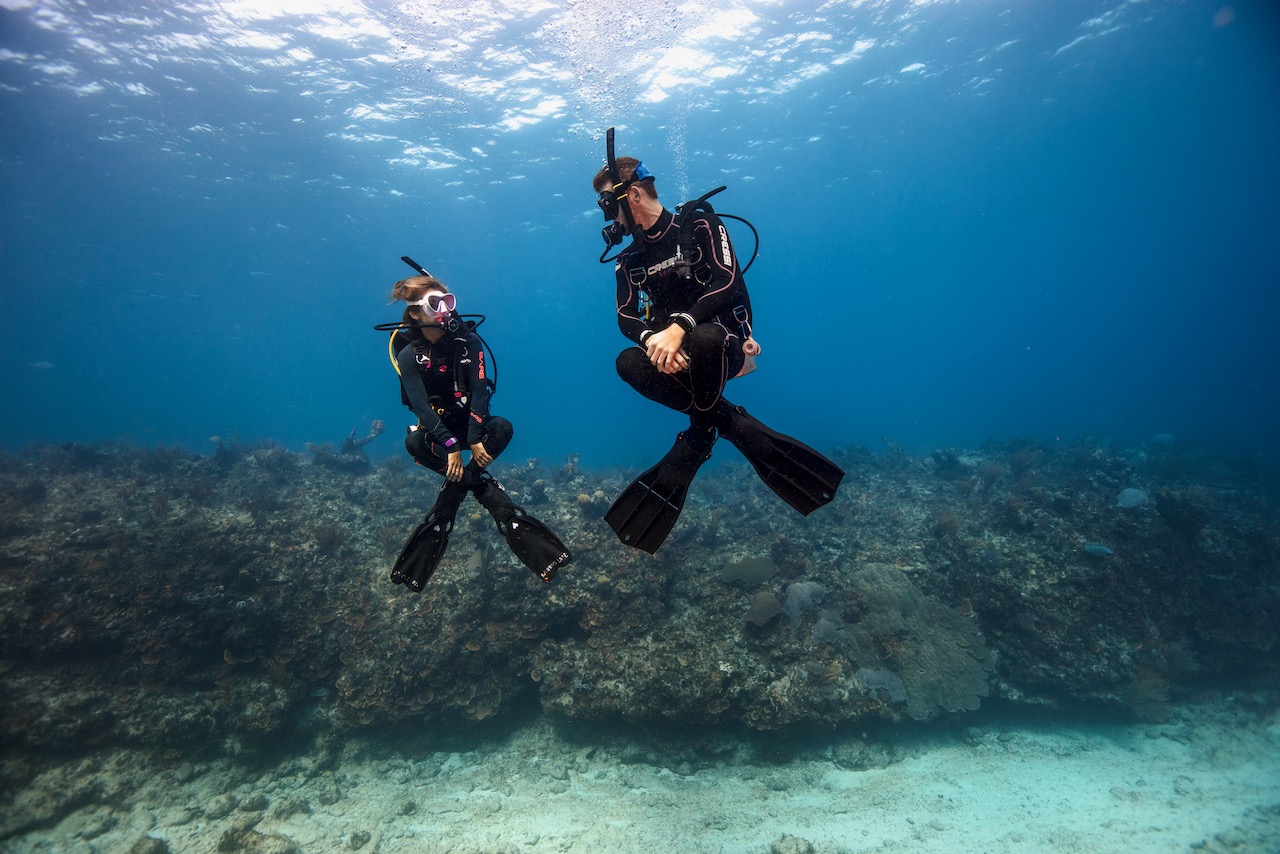
Good buoyancy control is by far the most important dive skill for a good scuba diver. With poor buoyancy control, you can severely damage the underwater world and quickly get into dangerous situations during your dive.
At many dive sites in the German-speaking region, you will find muddy grounds, that you easily churn up, or deep waters with poor visibility where you have to permanently observe and maintain your dive depth. Especially in such situations, good buoyancy control is indispensable.
During the PADI Specialty Peak Performance Buoyancy course, you will practice your buoyancy skills while refining the amount and location of your dive weights. With this, you will be well prepared for your next dives in local waters and you will probably reduce your air consumption as well.
PADI SPECIALTY PEAK PERFORMANCE BUOYANCY COURSE
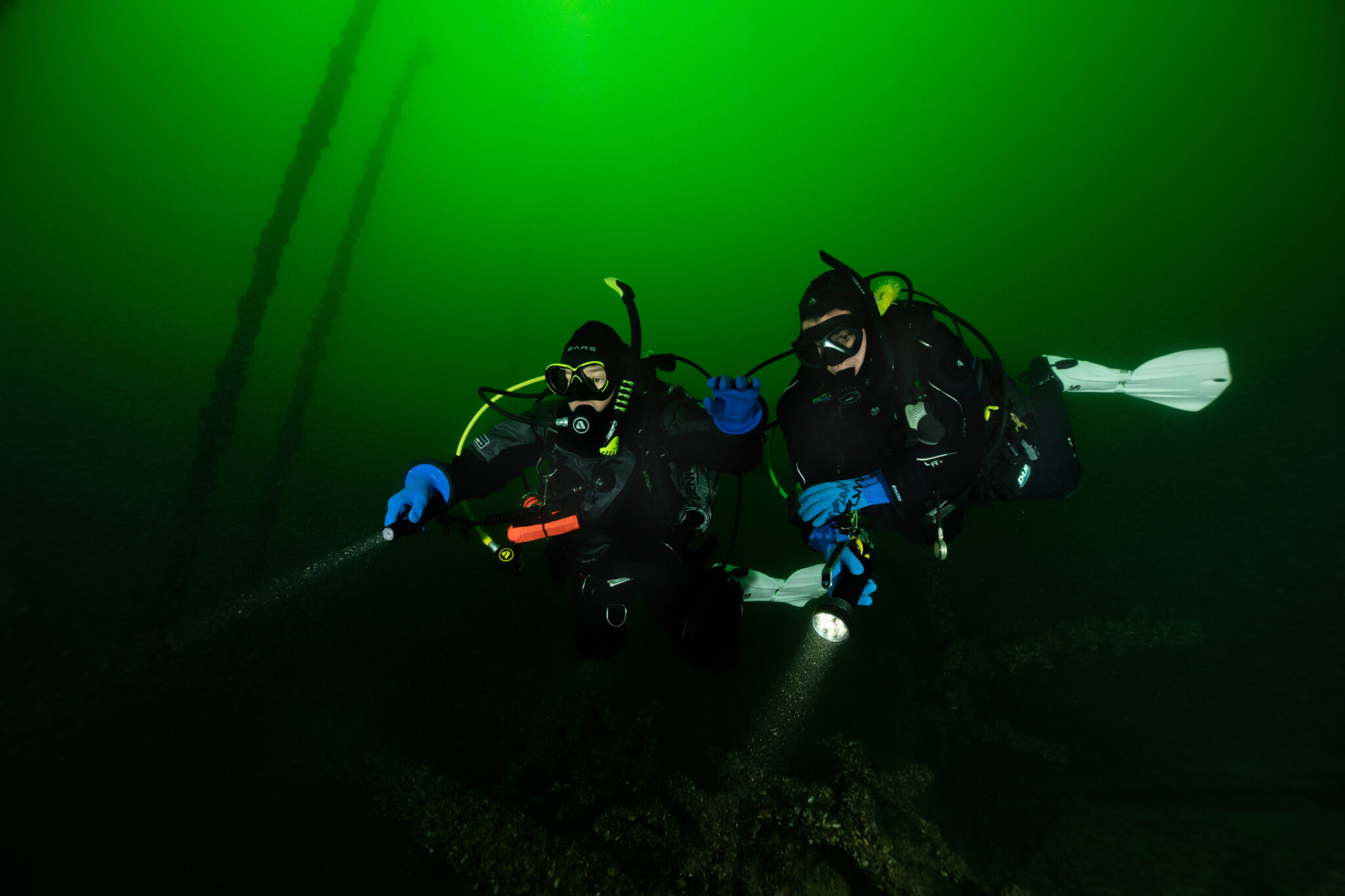
In some waters in Germany, Austria, and Switzerland, visibility is quite limited depending on the season. Therefore, professional underwater navigation is essential for safe diving in local waters.
During the PADI Specialty Underwater Navigator course, you will learn how to safely use a dive compass and how to correctly estimate distances underwater based on fin strokes and dive time, even in poor visibility.
After completing this advanced training of complex navigation patterns and orientation based on the natural environment at your dive site, you will always know your position during the dive. This allows you to follow your dive plan, even in poor visibility, without having to surface for orientation.
PADI SPECIALTY UNDERWATER NAVIGATOR COURSE
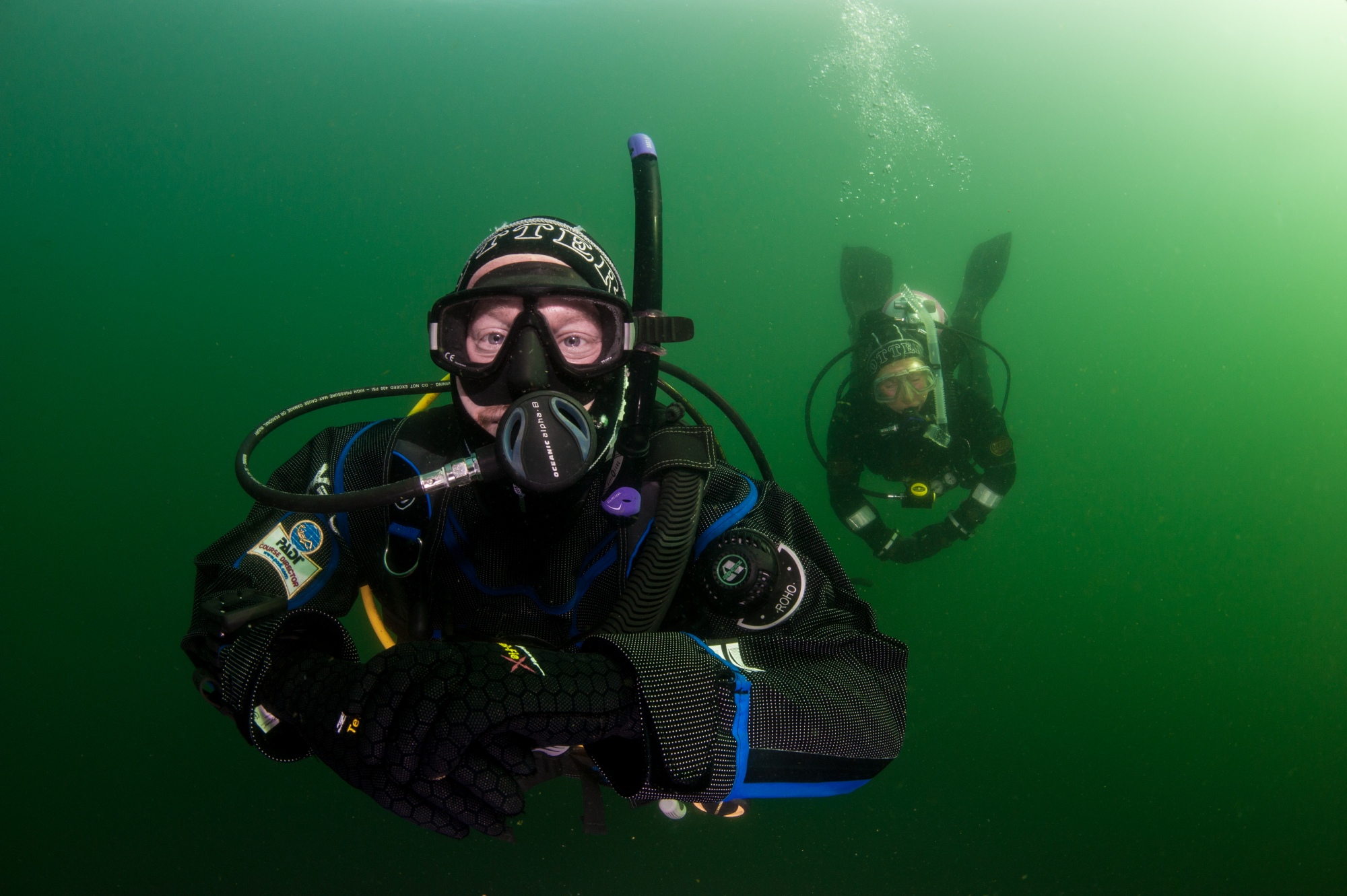
Rivers, lakes, and the sea in German-speaking countries are rarely warmer than 20°C, especially in deeper areas, and showers at dive sites are very uncommon. What could be better than diving with a waterproof dry suit with matching undergarment that keeps you dry and warm underwater?!
The PADI Specialty Dry Suit Diver course is a real gain for diving in Germany, Austria, and Switzerland. During the course, you will learn how a dry suit works and how to buoy it correctly.
Unlike a wet or semi-dry dive suit, the “Trocki” (as it is affectionately called in Germany) can be filled with air just like your BCD so you can safely control your buoyancy. In addition, you will also learn everything about choosing the right undergarment and how to properly care for your dry suit so that it really remains waterproof.
PADI SPECIALTY DRY SUIT DIVER COURSE
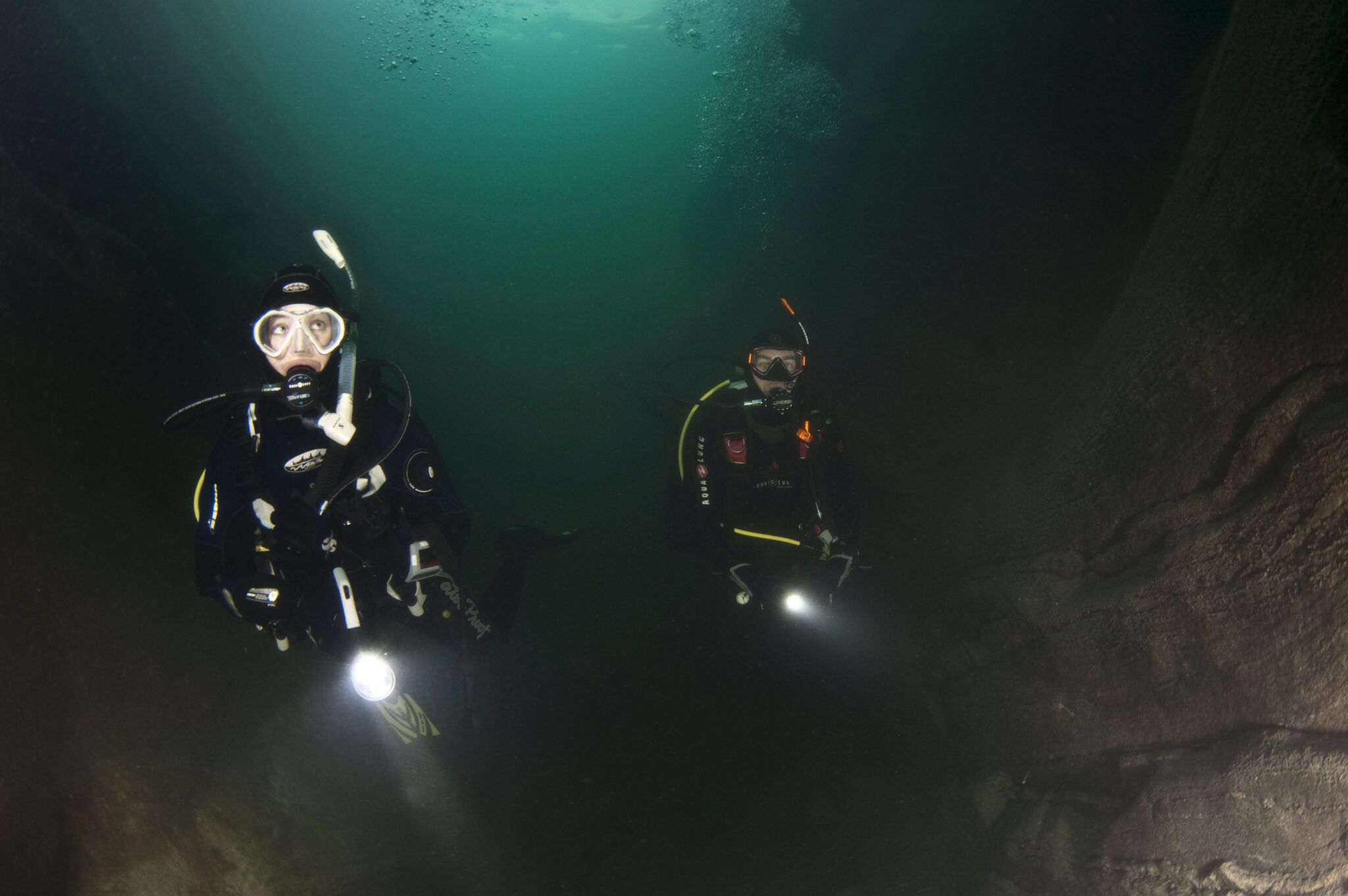
Deep dives (up to the 40 meters for recreational divers) are a mental and sometimes physical challenge, especially when it is cold and dark like waters in German-speaking countries. That is why the PADI Specialty Deep Diver course is worthwhile, since it allows you to do your first deep dives with an experienced instructor.
The advanced training for deep diving not only ensures more safety but also gives you the opportunity to explore your personal limits. During the Deep Diver course, you will also learn all about narcosis, which can happen at a depth of about 30 meters, and how to take your increased air consumption into account when planning a deep dive.
PADI SPECIALTY DEEP DIVER COURSE
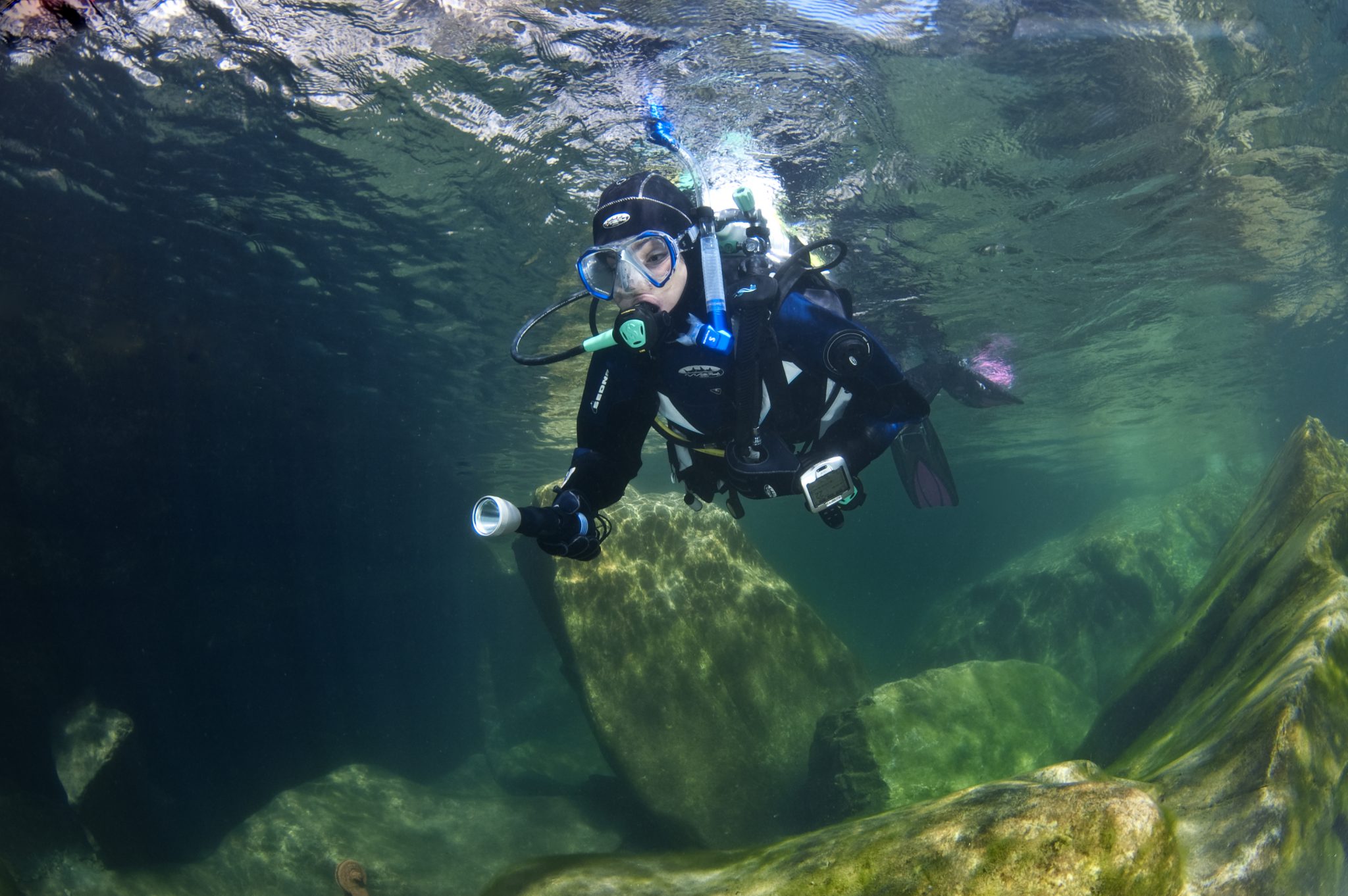
Although actual diving with Nitrox (oxygen enriched breathing air) is still rarely offered in German-speaking countries, the PADI Specialty course to become an Enriched Air Diver is one of the most rewarding courses as a continuing education for recreational divers. Especially divers who do several dives a day at home, or during their diving trip, benefit immensely from diving with Nitrox and the corresponding Specialty course.
Due to the increased oxygen content, the amount of nitrogen in the air you breathe decreases, resulting in less nitrogen being absorbed by your body tissues on all your dives with Nitrox (Enriched Air). This minimizes the potential risk of decompression sickness and narcosis during diving.
During the PADI Enriched Air (Nitrox) course, you will also learn how to correctly analyze the oxygen content of the gas in your cylinder and what dangers or rather depth limits (MOD) exist due to the increased oxygen content of the gas. Even if you do not dive with Nitrox in German-speaking countries, you can enjoy all benefits of the Enriched Air Diver course on your next diving trip as using Nitrox instead of air is free of charge in many diving areas.
PADI SPECIALTY ENRICHED AIR DIVER COURSE
No matter which of the five PADI Specialty courses you ultimately choose, any of them will make you a better diver and teach you new skills that will make diving more comfortable and, of course, safer.
As a diving instructor and outdoor enthusiast, Christian Hubo spends most of the year traveling and pursuing his great passions of diving and hiking. He shares his versatile experience and tips on diving, outdoors and traveling not only in his outdoor and travel blog “feel4nature” but also in various articles and numerous other publications.
Share This
